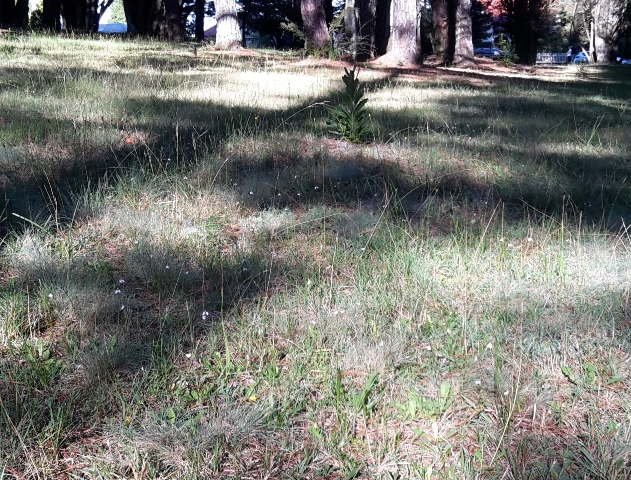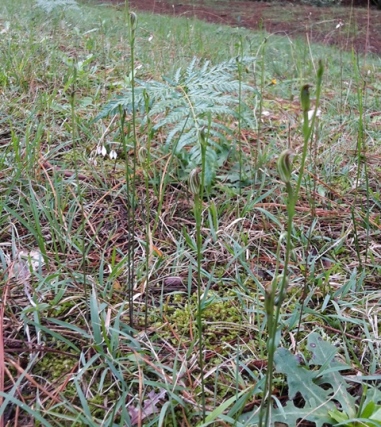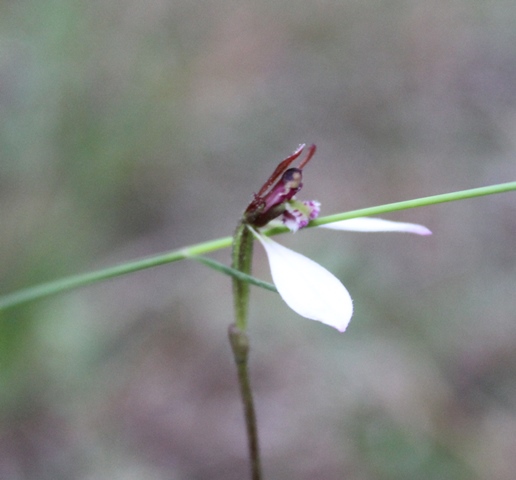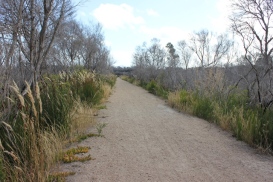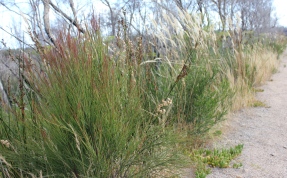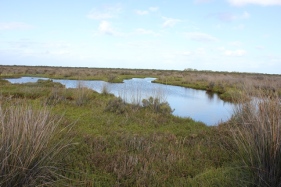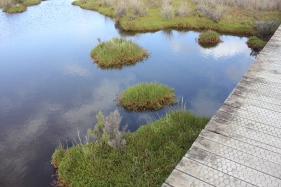The swimming pool in Fiona’s Canberra garden was no longer in use with children grown up and away from home so Fiona decided to repurpose the area as a sunken native garden, using many plants endemic to the Canberra region.

The pool in use in 2006

The vinyl lining gone and the project begun 2013

Completed garden awaiting an umbrella and a garden setting 2016
Fiona reused much of the concrete from the pool sides to create her new terraces and steps and created a half gabion effect in her retaining walls, using mesh as the cage and existing concrete and pebbles for the fill. Netting holds the pebbles in place behind the weldmesh. The posts from the old pool were still in good shape so Fiona left them in place and retained the capping for stability around the curves.

Wall detail with Callistemon sieberi and Veronica perfoliata
The soil in this patch of Canberra is alkaline, helped along by all the concrete. Fiona only had subsoil clay to work with so mixed it with coarse sand and compost to form the garden beds. The Canberra region has a range of soil types so not all endemics will grow. Fiona tries to select plants she hopes will cope but removes them after a couple of special treatments if they don’t establish.

The rockery over a vulnerable sewerage line with non damaging hybrid Brachyscome angustifolia, and the endemics Bulbine glauca, Viola hederacea and Scleranthus biflorus

The stairs and path composed of old clay fill dug from the pool site, it’s a good colour and very alkaline so weed resistant

The bog garden
The bottom of the garden becomes boggy in wet weather and Fiona has planted in some bog plants, seriously restricted on account of the sewerage lines. The bog circle contains Lythrum salicaria, Isolepsis nodosa, Baloskion tetraphyllum and a Juncus sp.

Scleranthus biflorus flanked by Kunzea ericoides “Snowman” with Chrysocephalum apiculatum and Acacia dawsonii all endemic in some form

Eremophila nivea “Blue velvet” a grafted Eremophila hit hard by frosts but recovered after hard pruning. Acacia boormanii behind
We found native bees visiting the grey Eremophila. We think they are blue banded bees from the Amegilla genus. The Scleranthus is known as Canberra grass.

One of the bluebells of Canberra Wahlenbergia communis
The floral emblem for Canberra is the bluebell Walhenbergia gloriosa. Fiona has a few species growing, the one I photographed volunteers between the pavers above the secret garden.

Fiona in her secret garden
